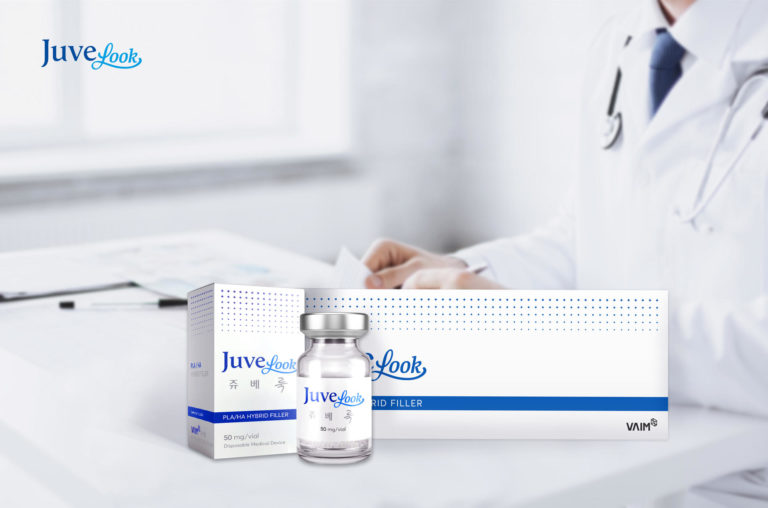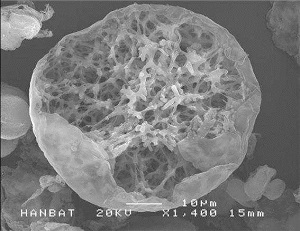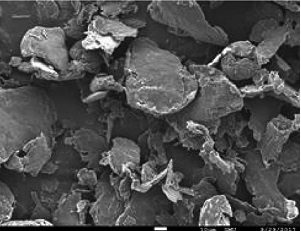
learn more about pdlla
Lactic acid (PLA) was originally synthesized from α-hydroxy acids by French chemists in 1954. This polymer is safely used in resorbable suture materials, plates and screws in orthopedic, neurological and craniofacial surgery. PLA creates chiral molecules (cthe starting molecule and its mirror image are not identical, chiral objects cannot be superimposed, they are a property of natural compounds) poly-L type (PLLA), poly-D type, poly-D, L-lactic acid (PDLLA) and meso-PLA. Only PLLA and PDLLA have been extensively researched with promising results.
In 1999, PLLA for injection was approved for use in Europe (New-Fill; Biotech Industry SA, Luksemburg).Initially, the product was registered as “wrinkle filler”. In 2004, it was approved in Europe to correct large volume losses in patients suffering from lipoatrophy.
On August 3, 2004, the United States Food and Drug Administration (FDA) approved Sculptra ™ (Dermik Laboratories, Berwyn, PA, USA) to correct volume losses resulting from facial lipoatrophy in HIV-infected patients. In 2009, this approval was extended to cosmetic / aesthetic medicine applications.
Plastic and Aesthetic Research
Efficacy and safety of poly-D,L-lactic acid microspheres as subdermal fillers in animals
Chuan-Yuan Lin1, Jui-Yu Lin1, Dae-Yeol Yang2, Seong-Ho Lee3, Jeoung-Yong Kim4, Miyeon Kang5 – Published: 25 Jul 2019
Poly-D,L-lactic acid (PDLLA) is a synthetic, biocompatible, biodegradable polymer.
In soft tissue augmentation, the size and chemical properties of the PDLLA microparticle are critical to its ability to initiate a subclinical inflammatory response,
which stimulates collagen deposition in the extracellular matrix.
The resulting facial volume restoration is controlled, predictable and long-lasting.
The unique physicochemical biostimulating properties of PDLLA set it apart from other available treatments and are the basis of the required unique treatment methodology for optimal results.
PDLLA is currently the most durable of all approved, certified biodegradable products.
Full correction still occurs in 80% of patients after 24 months. PLA (Polylactic Acid) is known as a collagen stimulator and offers unique and effective ways to deal with tissue defects for a natural and lasting effect.
Plastic and Aesthetic Research
“Efficacy and safety of poly-D,L-lactic acid microspheres as subdermal fillers in animals”
Chuan-Yuan Lin1, Jui-Yu Lin1, Dae-Yeol Yang2, Seong-Ho Lee3, Jeoung-Yong Kim4, Miyeon Kang5 – Published: 25 Jul 2019
The injection of polylactic acid causes a biological reaction in the subcutaneous tissue, similar, but less inflammatory to that seen during wound healing and suturing. There is a natural transition from acute to low-grade chronic inflammation.
- Intentional inflammatory reaction around a foreign body
- Fibroplasia (growth of fibrous connective tissue) in the skin,
- Collagenogenesis stimulated by lactates released into the tissues and the slow degradation of PDLLA microparticles are those factors that to varying degrees contribute to the long-term clinical effect that persists after the procedure.
The foreign body inflammatory response leads to microparticle encapsulation followed by fibroplasia and the resulting deposition of type I collagen in the extracellular space.
Stages:
- Tissue response to PDLLA from acute inflammation to declining inflammatory response.
- Protein adsorption occurs immediately after injection followed by infiltration by neutrophils and then macrophages.
- PDLLA degradation, and collagen accumulation over time.
- After 6 months, the number of macrophages and fibrocytes decreases (Fibrocyte – a connective tissue cell present as a reduced form of fibroblast with a lower metabolic efficiency – a senile cell, used up)
- Collagen production continues to increase and inflammation returns to baseline levels.
JUVELOOK particles are large enough to avoid phagocytosis via macrophages in the skin, or penetrate the walls of the capillaries, but at the same time they are small enough to be easily injected with a needle without blocking it. They do not cause lumps under the skin due to their round and porous shape.


Injectable fillers offer simple and minimally invasive techniques to expand tissue. Ideal materials for such treatments must be easy to inject, non-migratory, volume stable, biodegradable and biocompatible. Currently, many types of tissue fillers are used in routine clinical practice for cosmetic and medical indications. These tissue fillers can be classified as temporary, semi-permanent, or permanent, depending on the duration of injection of the product into the tissues. These fillers are also classified according to their composition, and the following has been studied: collagen (bovine, porcine and human), hyaluronic acid (HA), polylactic acid PLA, calcium hydroxylapatite (CaHA), polymethyl methacrylate, polyacrylamide and autologous fat cells. Among these fillers, CaHA and PLA (Polylactic Acid) are known as collagen stimulants and offer unique and effective ways to deal with tissue defects for a natural and lasting effect.
Plastic and Aesthetic Research
Efficacy and safety of poly-D,L-lactic acid microspheres as subdermal fillers in animals
Chuan-Yuan Lin1, Jui-Yu Lin1, Dae-Yeol Yang2, Seong-Ho Lee3, Jeoung-Yong Kim4, Miyeon Kang5 – Published: 25 Jul 2019
The treatment should be repeated 2/3 times at intervals of 6 to 8 weeks. Duration of the procedure from the last visit exceeds 24 months.
Descriptions of the beneficial effects of polylactic acid in patients for up to 40 months can be found in the literature. The percentage of satisfied patients exceeds 90%.
The poly L lactic acid particles have the structure of broken glass, and the poly D, L lactic acid microparticles are round, porous with a mesh structure. This unique structure of molecules allows it to connect with non-cross-linked hyaluronic acid, which makes this preparation unique.


- Patent : No. 10-1481441 Manufacturing method of polymeric microparticles having network structure
- Patent : No. 10-1725279 A process for the preparation of polylactic acid microparticles by a spray method
- A comparison between hyaluronic acid and polylactic acid filler injections for temporary penile augmentation in patients with small penis syndrome. Authors: Dae Yul Yang, MD Phd; Hyun Cheol Jeong , MD,; Sun Tae Ahn, MD, PhD; Woong Jin Bae, MD, Phd; Du Geon Moon, MD, PhD; Sae Woong Kim, MD, PhD, and Won Ki Lee, MD, PhD
- Biostymulatory effects of polydioxanonoe, PDLLA and polycaprolactone fillers in mouse model. Authors Tae-Rin Kwon PhD, Sung Won Han MS; In Kwon Yeo MD, Jong Hwan Kim MS, Jae Min Kim MD, Ji-Yeon Hong MD, Byung-Chul Lee MS, Sung-Eun Lee MS, Ho Sang Moon PhD, Han Jin Kwon PhD, Beom Joon Kim MD
- Efficacy and safety of PDLLA microsperes as subdermal fillers in animals. Chuan-Yuan Lin, Jui-Yu Lin, Dae-Yeol Yang, Seong-Ho Lee, Jeoung-Yong Kim, Miyeon Kang
- PDLLA membranes for bone regeneration. Marco Annunziata, DDS, PhD; Livia Nastri, DDS, PhD; Andrea Borgonovo, MD, DMD; Marco Benigni, DDS and Pier Paolo Poli DDS.
- Development and characterization of polymeric microparticle of PDLLA loaded with holmium acetylacetonate. Mariangela de Burgos M. de Azevedo, Vitor H. S. de Melo, Carlos Roberto J. Soares, Douglas M. Miyamoto, Ricardo A. Katayama, Peterson L. Squair, Caio H.N. Barros &Ljubica Tasic
- Assessment of the safety and efficacy of poly-L-lactic acid for treatment of HIV-associated facial lipoatrophy. Cheryl M. Burges, MD; and Rafaela M. Quiroga, MD
- Injectable poly-L-lactic acid for cosmetic enhancement: Learning from the European experience. Kimberly Butterwick, MD and Nicholas J. Lowe, MD FRCP
- Reconstruction of injectable PDLLA, Efficacy of different diluents and a new accelerating method. Se-Yi Chen, MD; Szu-Ting Chen, PhD; Jui-Yu Lin, MD; Chuan-Yuan Lin, MD
- Antibacterial poly (D,L-lactic acid) coating of medical implants using a biodegradable drug delivery technology. Hans Gollwitzer, Karim Ibrahim, Henriette Meyer, Wolfram Mittelmeier, Raymonde Busch and Axel Steberger
- Działanie kwasu polimlekowego w tkankach w chirurgii estetycznej. Dorota Małgorzata Wydro
- Biodegradable poly(DL-lactide-coglycolide) microspheres. J.H. Eldridge, J.K. Staas, T.R. Tice and R.M. Gilley
- Poly(D,L-lactic acid) nanoparticle size reduction increases its immunotoxicity. Jessica Da Silva, Sandra Jesus, Natalia Bernardi, Mariana Colaco and Olga Borges
- RGD-modified poly(D,L-lactic acid) nanoparticles enhance tumor targeting of oridonin. Jie Xu, Ji-Hui Zhao, Ying Liu, Nian-ping Feng, Yong-Tai Zhang
- The use of polylactic acid to obtain biodegradable medical devices. R.Yu. Galimzyanova, MD Mevliyanova, D.R. Hisamieva N.V. Pesternnikova, I.N. Musin and M.S. Lisanevich
- Injectable fillers for volume replacement in the aging face. Timothy M. Greco, M.D., F.A.C.S.; Marcelo B. Antunes, M.D.; Seth A. Yellin, M.D.
- Soft Tissue augmentation using sculptra. Gail Humble, M.D. and Douglas Mest, M.D.
- Efficacy and safety of injection with poly-L-lactic acid compared with hyaluronic acid for correction of nasolabial fold: a randomized, evaluator-blinded, comperative study. M.Y. hyun, Y. Lee, Y.A. No, K.H. Yoo, M.N. Kim, C.K. Hong, S.E. Chang, C.H. Won and B.J. Kim
- Preparation and characterization of microporous poly(D,L-lactic acid) film for tissue engineering scaffold. Shuai Shi, Xiu Hong Wang, Gang Guo, Min Fan, Mei Juan Huang, Zhi Yong Qian,
- Contolled cisplatin delivery system using poly(D,L-lactic acid). O. Ike, Y. Shimizu, R. Wada, S.-H Hyon and Y. Ikada
- Sculptra: A stymulatory filler. Victor Lacombe, M.D.
- Injectable PLLA (Sculptra) technical considerations in soft-tissue contouring. Samuel M. Lam, M.D., Babak Azizzadeh, M.D., Miles Graivier, M.D.
- Degradation of poly(D,L-lactic acid) nanoparticles coated with albumin in model digestive fluids (USP XXII). F.B. Landry, D.V. Bazile, G. Spenlehauer, M. Veillard and J. Kreuter
- Internalization of poly(D,L-lactic acid) nanoparticles by isolated human leukocytes and analysis of plasma proteins adsorber onto the particles. Jean_Christophe Leroux, Patricia Gravel, Lub Balant, Bernard Volet, Beatrice M. Anner, Eric Allemann, Eric Doelker and Robert Gurny.
- Biocompatibility of Poly_DL lactic acid (PDLLA) for lung tissue engineering. Y.M. Lin, A.R. Boccaccini, J.M. polak and A.E. Bishop
- Orofacial granulomas after injection of cosmetic fillers.Histopathologic and clinical study of 11 cases. T. Lombardii, J. Samson, F. Plantiere, C. Husson, R. Kuffer
- Long term (24-month) safety evaluation of PDLLA filler injection for the nasolabial fold. A multicenter, open, randomized, evaluator-blind, active-controlled design
- Optimizing poly-l-lactic acid use. Nick J. Lowe.
- The use of PDLLA devices for bone augmentation techniques: a systematic review. Marco Annunziata, Livia Nastri, Gennaro Cecoro and Luigi Guida
- Synthesis and characterization of low molecular weight polylactic acid. C.S. Proikakis, P.A. Tarantili and A.G. Andreopoulos
- Axonal regenration across an artificial scaffold combined with cel transplantation applied to the transected spinal cord. Mitsuhiro Enomoto, Madoka Ukegawa, Kazuyuki Fukushima, Kush Bhatt, Yoshiaki Wakabayashi, Atsushi Okawa
- Design of bioinspired polymeric materials based on poly (D,L-lactic acid) modifications toward improving its cytocompatibility. Xufeng Niu, Yanfeng Luo, Yonggang Li, Chunhua Fu, Jia Chen, Yuanliang Wang
- Biocompatibility and safety of PLA and its copolymers. Yuval Ramot, Moran Haim-Zada, Abraham J. Domb, Abraham Nyska
- Tamoxifen citrate-loaded poly(D,L) lactic acid nanoparticles: evaluation for their anticancer activity in vitro and in vivo. NR Ravikumara, Mausumi Bharadwaj and Basavaraj Madhusudhan.
- Poly-L-lactic acid: a new dimension in soft tissue augmentation. Adam M. Rotunda, Rhoda S. Narins
- A new option for volumetric restoration: poly-l-lactic acid. D Thioly-Bensoussan
- Drug-eluting biodegradable poly-D/L-lactic acid vascular stents: an experimental pilot study. Ilka Uurto, MD’ Joonas Mikkonen, MSc; Jyrki Parkkinen, MD; Leo Keski-Nisula, MD; Timo Nevalainen, DVM, Minna Kellomaki, MSc; Pertti Tormala, MSc; and Juha-Pekka Salenius, MD
- Facial Volumetric Correction with injectable poly-L-lactic acid. Danny Vleggaar, MD
- The use of poly-L-lactic acid in the management of soft-tissue augmentation: a five-year experience. Didier Vochelle, MD
- Molecular biocompability evaluation of poly(D,L-lactic acid)-modified biomaterials based on long serial analysis of gene expression. Yan Xiang, Yuanliang Wang, Yanfeng Luo, Bingbing Zhang, Juan Xin, Danfang Zheng
- The structure and properties of biodegradable PLLA/PDLA for melt-blown nonwovens. Bin yu, Yongmin Cao, Hui Sun, Jian Han
- Compositions of injectable poly D,L-lactic acid and injectable poly-L-lactic acid. S.Y. Chen, J.Y. Lin, C.Y. Lin in C”linical and Experimental Dermatology”.
- Foreign body reaction to poly-D-L-lactic acid resobable plates used in craniofacial surgery. Nicholas Cen, BS; Matthew J. Davis, BS; Amjed Abu-Ghname, BS; Lesley W. Davies, PA-C, Kalyani R. Patel, MD and Edward P. Buchanan, MD in „The Journal of Craniofacial Surgery”
- Comparison of antiaging effects on rat skin of COG thread and poly-L-lactic acid thread. Yelda Kapicioglu MD, Mehmet Gul PhD, Gulbahar Sarac MD, Birgul Yigitcan PhD and Harika Gozukara PhD
- Adverse reaction to polylactic acid injections in the periorbital area. M Apikian, FRACGP, S Roberts, FRACGP & G J Goodman FACD
- Dermal fillers for the traetment of tear trough deformity: a review of anatomy, traetment techniques, and their outcomes. Jaishree Sharad
- Foreign body granulomas after all injectable dermal fillers: part 1 . possible causes. Article in „Plastic and Reconstructive Surgery” – July 2009
- Preparation of poly (D,L) lactide microspheres by emulsion-solvent evaporation, and their clinical applications as a convenient embolic material. C. Grandfils, P. Flandroy, N. Nihant, S. Barbette, R. Jerome, Ph Teyssie and A. Thibaut
- A use of poly-L-lactide, D-lactide sheet on posteriori orbital floor fracture. Kun Hwang MD, PhD; Dong Hyun Kim, MD, MS and In Sun Park PhD
- Hanging by a thread: choosing the right thread for the right patient. Vincent Wong, Rafiq N. Kaylan R, Hsenriksen A, Funner R
- An approach to sstructural facial rejuvenation with fillers in women. R. Fitzgerald, MD, J. Carueville, MD, P.T. Yang, MD FRCSC
- A meta-analysis and systematic review of the incidences of complicattions following facial thread-lifting. Zehao Niu, Kexue Zhang, Wende Yao, Yan Li, Weiqian Jiang, Qixu Zhang, Maria J. Troulis, Meredith August, Youbai Chen, Yan Han.
- Our technique of thread lifting for facial rejuvenation. Irina Khrustaleva, MD, Galina Khrustaleva, MD, Anna Borovikova, MD, Alexey Tamarov, MD, Alexei Borovikov, MD
- Adverse reactions to injectable aesthetic micrimplants. Celia Requena, MD, Maria Jose Izquiderdo, MD, Miguel Navarro, MD, Antonio Martinez MD PhD, Juan Jose Vilata MD, PhD, Rafael Botella MD, PhD, Jorge Amorrortu, MD, Vicente Sabater MD, PhD, Adolfo Aliaga MD, PhD and Luis Requena MD, PhD
- Safety and complications of absorbable threads made of poly-L-lactic acid and poly lactide/glycolide: experience with 148 consecutive patients. Sukran Sarigul Guduk MD, Nezih Karaca MD
- Comperative effects of varius absorbable threads in a rat model. Jung Jin Shin, Tae Jun Park, Bo Young Kim, Chang Min Kim, Dong Hye Suh, Sang Jun Lee, Hye-Rim Moon & Hwa Jung Ryu
- Treatment of complications following facial thread-lifting. Youbai Chen, MD, PhD, MSc; Zehao Niu MD; Rui Jin MD; Yonghong Lei MD, PhD, Yan Han MD, PhD.
- Treatment of postblepharoplasty lower eyelid malposition by Aptos thread. Zuo Jun Zhao, MD; You Lu, BS; Wei Zhong Liang MD and Jun Ling Wu, BS
Publications for those interested are sent by e-mail after sending the title of the selected publication.
